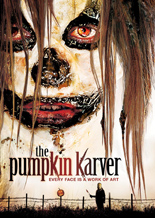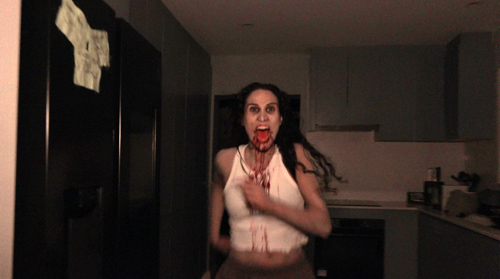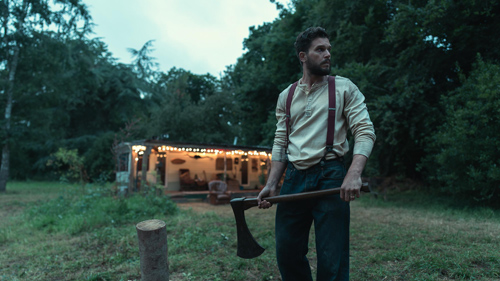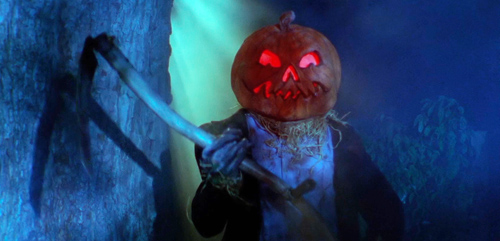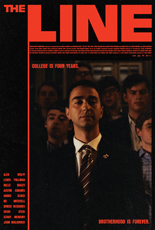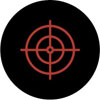
First things first: I have no idea why The Pumpkin Karver chooses to misspell its own title. It’s about a carver who moves to a small town named Carver, with nary a K in sight.
That’s where clean teen Jonathan (Michael Zara) moves with his big sister, Lynn (WWE Diva Amy Weber), for a fresh start. See, a year earlier, Lynn’s asshole boyfriend, Alec (David J. Wright, TV’s Sons of Anarchy), pulled a mean prank on Halloween night by donning a truly creepy pumpkin mask, locking Lynn in her garage and coming toward her with a knife. Thinking it real, Lynn screamed, and Jonathan ceased carving his pumpkin (not a euphemism) to save his sis by fatally stabbing the guy. Sucks to be Alec.
Anyway, a year later, they pull into Carver, where the population hovers around 666 — enough for the local teens to have a blowout kegger and dress in their best Austin Powers costumes. Jonathan is smitten by Lynn’s single friend Tammy (Minka Kelly, Blackwater Lane), even though she wears a beret and says a lot of things that could get you thrown into special ed.

Threatening to snuff out their burgeoning love is that Jonathan is forever tormented by visions of Alec in the aforementioned mask. (Let us pause to note the Slipknot-esque visage on the movie’s cover thankfully appears nowhere.) Worse, someone is killing the partiers — and, in the cases of obnoxious, toga-clad Pauly Shore stand-ins Spinner (Alex Weed) and Bonedaddy (David Phillips), not soon enough.
With the victims’ faces sporting a gourd-ready rictus, are these murders the work of a resurrected Alec? Or perhaps the weird old pumpkin farmer (Terrence Evans, 2003’s The Texas Chainsaw Massacre) who shares his expert karving carving techniques and tools with Jonathan? (Whoever it is, props for choosing a theme and sticking with it. And adding the shoved-in-mouth candle? Chef’s kiss.)
If the internet is to be believed, Robert Mann’s movie served as something of a gateway horror for impressionable tweens and early teens in the era of straight-to-DVD trash proliferation. I can see why. With its Halloween-driven storyline, pumpkin-patch backdrop and slasher setup, The Pumpkin Karver is practically built to court and foster viewers’ growing nostalgia, clouding how silly it actually is. I gained little from watching, but I don’t regret the experience, either. —Rod Lott

